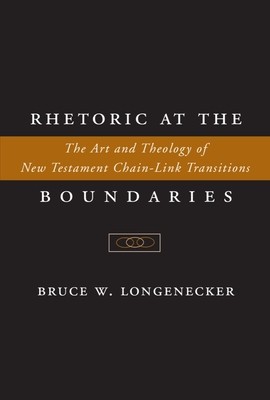
- We will send in 10–14 business days.
- Author: Bruce W Longenecker
- Publisher: Baylor University Press
- ISBN-10: 1932792244
- ISBN-13: 9781932792249
- Format: 16.1 x 23.5 x 2.6 cm, kieti viršeliai
- Language: English
- SAVE -10% with code: EXTRA
Reviews
Description
In Rhetoric at the Boundaries Bruce W. Longenecker explores the way in which New Testament authors used an ancient rhetorical device to effect smooth transitions, both large and small. His study demonstrates how recognition of this rhetorical technique proves decisive for New Testament interpretation. Longenecker accomplishes this by examining the evidence for chain-link interlocks in a variety of ancient sources, including the Hebrew scriptures, Jewish and Roman authors of the Graeco-Roman world, and the Graeco-Roman rhetoricians. He then applies the results of the survey to fifteen problematic passages of the New Testament. In each case, Longenecker establishes the presence of chain-link interlock and highlights the structural, literary, and theological significance of the rhetorical device for New Testament interpretation.
EXTRA 10 % discount with code: EXTRA
The promotion ends in 23d.04:12:03
The discount code is valid when purchasing from 10 €. Discounts do not stack.
- Author: Bruce W Longenecker
- Publisher: Baylor University Press
- ISBN-10: 1932792244
- ISBN-13: 9781932792249
- Format: 16.1 x 23.5 x 2.6 cm, kieti viršeliai
- Language: English English
In Rhetoric at the Boundaries Bruce W. Longenecker explores the way in which New Testament authors used an ancient rhetorical device to effect smooth transitions, both large and small. His study demonstrates how recognition of this rhetorical technique proves decisive for New Testament interpretation. Longenecker accomplishes this by examining the evidence for chain-link interlocks in a variety of ancient sources, including the Hebrew scriptures, Jewish and Roman authors of the Graeco-Roman world, and the Graeco-Roman rhetoricians. He then applies the results of the survey to fifteen problematic passages of the New Testament. In each case, Longenecker establishes the presence of chain-link interlock and highlights the structural, literary, and theological significance of the rhetorical device for New Testament interpretation.


Reviews